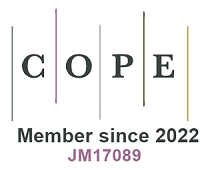Risk factors for coronary artery disease in familial hypercholesterolemia
Abstract
Individuals with familial hypercholesterolemia are at markedly increased risk of coronary artery disease (CAD). Accurate risk assessment and appropriate management in this population are therefore crucial. In this review, we summarize findings from several studies that have investigated predictors of CAD in familial hypercholesterolemia (FH). The main categories of predictors include demographic variables and comorbidities, lipid-related parameters, physical findings such as xanthomas, genetic characteristics, and imaging markers of atherosclerosis. We also highlight risk prediction models developed from these previously published findings.
Keywords
INTRODUCTION
The most recent European guidelines on lipid-lowering therapy classify patients with familial hypercholesterolemia (FH) as either very high or high risk[1]. Risk stratification is particularly important when patients do not yet have established atherosclerotic cardiovascular disease (ASCVD). In the United States and Europe, the Pooled Cohort Equation and SCORE system, respectively, are widely used to estimate cardiovascular risk. However, these tools often underestimate risk in FH patients, who are exposed to lifelong elevations in blood cholesterol. Therefore, improving the accuracy of cardiovascular risk estimation in this population is critical and may support more personalized therapeutic approaches.
Several common factors have been identified as predictors of coronary artery disease (CAD) in FH. For example, male sex, hypertension, smoking, and low high-density lipoprotein cholesterol (HDL-C) levels are consistently associated with elevated risk[2]. Nevertheless, the predictive value of these factors often depends on the characteristics of the study cohort, and individual studies have inherent limitations[3]. As a result, research into optimal approaches for risk prediction remains ongoing.
In this review, we provide a comprehensive overview of CAD predictors in FH, with particular emphasis on recent advances in genetic analyses and imaging studies, in addition to traditional risk factors.
PREDICTORS OF CORONARY ARTERY DISEASE
Demographic factors and comorbidities
Age, sex, hypertension, smoking, body mass index, and levels of low-density lipoprotein-cholesterol
A recent study of a large Spanish FH cohort demonstrated sex-based differences in cardiovascular risk. The adjusted hazard ratio for ASCVD was 1.90 in men compared with women, and cardiovascular event-free survival was lower in men (hazard ratio 3.52)[8]. Hypertension has consistently been identified as a predictor of CAD in patients with FH[9-11]. In a global study of FH patients from 50 countries, obesity was associated with an increased risk of CAD in both children and adults, independent of LDL-C levels and lipid-lowering therapy[12].
Table 1 presents the categories and detailed descriptions of cardiovascular risk predictors in patients with FH.
Predictors of coronary artery disease in FH
| Category | Predictors | Effect | References |
| Demographic Factors/comorbidities | Age | Associated with higher cardiovascular risk (OR 1.07) | [5] |
| Male sex | Associated with higher cardiovascular risk (HR 3.52) | [8] | |
| Hypertension | Consistently associated with CAD risk | [9-11] | |
| Diabetes mellitus | Predictive value for CAD risk is inconsistent | [5,7] | |
| Smoking | Associated with higher cardiovascular risk (OR 1.71) | [5] | |
| Family history of cardiovascular disease | FH patients more frequently have a family history of premature CVD | [4] | |
| Obesity | Associated with higher CAD risk | [12] | |
| Xanthoma | Tendon xanthoma | Associated with 3.4-4.6-fold higher CAD risk | [7] |
| Progression of Achilles tendon thickness | Associated with 2-6-fold higher cardiovascular risk | [15] | |
| Lipid parameters | LDL-C and cumulative LDL-C exposure | Associated with higher CAD risk | [16-18] |
| Low HDL-C | Associated with higher CAD risk in multiple studies | [9,21,22,23] | |
| Lipoprotein(a) | > 50 mg/dL is significant in prediction models | [20] | |
| Genetic variants | LDLR variants | LDL receptor-deficient variants are associated with 7-fold higher CAD risk | [7] |
| Other variants (PCSK9, ABCG8) | Variants of PCSK9 and ABCG8 are associated with higher CAD risk | [11] | |
| Imaging data | Coronary artery calcium score | > 100 associated with HR 32.05; annual event rate is 0 when score is 0 | [30,31] |
| Carotid plaque | Presence of plaque associated with a 2.4-fold higher event risk; higher plaque scores associated with HR 2.24 for cardiovascular events | [32,33] |
Xanthoma
Among patients with severe hypercholesterolemia, those exhibiting clinical signs of FH, such as xanthoma and/or a family history of the disease, demonstrate a 3.4- to 4.6-fold higher risk of CAD[7]. Skin and tendon xanthomas are key manifestations of FH. Skin xanthomas typically appear on extensor surfaces, including the elbows, knees, wrists, and gluteal regions. Tendon xanthomas often present as thickening of the Achilles tendon[13,14]. Progressive Achilles tendon thickening is associated with poorer cardiovascular outcomes in FH patients. In Japan, an Achilles tendon thickness > 8.0 mm in men or > 7.5 mm in women, measured via
Lipid-related parameters and biomarkers
High LDL-C levels are a key predictor of CAD risk. For example, the International Atherosclerosis Society classifies severe forms of FH as LDL-C > 400 mg/dL, LDL-C > 310 mg/dL with one additional risk factor, or LDL-C > 190 mg/dL with two additional risk factors[16]. Both cumulative LDL-C exposure[17,18] and Lp(a) levels[17] independently predict CAD. In one study, smoking and LDL-C exposure particularly amplified cardiovascular risk. Additionally, a Dutch study found that Lp(a) levels reclassified up to 18% of individuals to a higher ASCVD risk category[19]. Spanish Familial Hypercholesterolemia Cohort Study (SAFEHEART), incorporating Lp(a) levels
Across studies in various countries, low HDL-C levels have also been independently associated with cardiovascular risk in FH patients[9,21,22]. Several studies have highlighted the functional properties of HDL, emphasizing its role in reverse cholesterol transport and atherosclerosis in FH[23]. Notably, serum cholesterol uptake capacity remained significantly associated with CAD in FH patients after adjusting for other clinical variables, whereas HDL-C levels did not[24]. Cholesterol efflux capacity was inversely associated with ASCVD presence in FH patients[25], with patients without CAD showing higher efflux capacity than those who had experienced cardiac events[26].
The relationship between triglyceride levels and CAD risk in FH has been inconsistent[4,9,20]. While some studies reported a positive association, it was not statistically significant in multivariate analyses[4,20]. Collinearity between variables, such as HDL-C and triglycerides, may attenuate the apparent independent effect of triglyceride levels when adjusted for stronger CAD predictors.
Genetic variants
In FH patients, the predictive value of adult cholesterol measurements may be limited. In contrast, genetic variants can provide additional predictive value for cardiovascular outcomes[27].
Pathogenic variants are associated with a three- to five-fold increased risk of CAD[7,28]. Different LDLR variants confer varying levels of risk: carriers of LDLR deficiency-associated variants have approximately a seven-fold increased risk, while carriers of other LDLR variants have about a four-fold higher risk compared with non-carriers[28]. Variants in other genes, including PCSK9, CETP, ABCG8, and LPL, are also linked to cardiovascular risk[11]. A Canadian study demonstrated that a polygenic risk score based on 192 single nucleotide polymorphisms predicted cardiovascular events in FH patients, suggesting that common variants may contribute to risk even in monogenic diseases[29].
Imaging data and other variables
Several studies have evaluated imaging data for cardiovascular risk prediction in FH patients. In two Spanish national registries, a coronary artery calcium (CAC) score > 100 was associated with a substantially higher risk of ASCVD (hazard ratio 32.05) compared with a score of 0, improving net reclassification by 45.4%[30]. Another study reported that CAC levels predicted cardiovascular events in FH patients on standard lipid-lowering therapy, with an annual event rate of 0% in patients with a CAC score of 0[31].
A Japanese study demonstrated that the severity of coronary and carotid plaques correlated with cardiovascular events[32]. Carotid plaque scores were significantly associated with cardiac events (hazard ratio 2.24), consistent with a Spanish study showing a 2.4-fold higher adjusted event risk in patients with carotid plaque[33]. Although imaging provides valuable risk prediction, cost considerations may limit its widespread implementation.
Low diagnostic rates and delayed diagnosis
FH is frequently underdiagnosed or diagnosed late[34], leading to prolonged arterial exposure to elevated cholesterol and increased cardiovascular risk. Raising awareness among healthcare professionals and the general population is critical. Cascade screening following the diagnosis of a proband is essential, as are aggressive lipid-lowering strategies (pharmacological and non-pharmacological) and ensuring patient adherence.
Prediction models
The SAFEHEART study analyzed 2,404 patients with a molecular diagnosis of FH. Its prediction model included age, sex, ASCVD history, blood pressure, body mass index, smoking, and LDL-C and Lp(a) levels. The model achieved a C-index of 0.8, demonstrating superior discriminatory power compared with the Framingham Risk Score[20]. However, a subsequent UK FH cohort study highlighted limitations in the model’s generalizability[3].
The Montreal-FH-SCORE incorporates age, HDL-C, sex, hypertension, and smoking status[21]. The FH-Risk Score, developed by Paquette et al.[22], includes sex, age, LDL-C, HDL-C, and Lp(a) levels, hypertension, and smoking status, achieving a Harrell C-index of 0.75 for 10-year event prediction, outperforming the SAFEHEART equation[22].
A comparison of these prediction models is presented in Table 2.
Comparison of CAD prediction models in FH
| Name | Included variables | Performance | Characteristics | References |
| SAFEHEART risk equation | Age, sex, ASCVD history, blood pressure, BMI, smoking, LDL-C, Lp(a) | C-index 0.80; Harrell C-index for 10-year events 0.69 | Better discrimination than the Framingham risk score; first equation to predict CVD events specifically in FH | [20] |
| Montreal-FH-SCORE | Age, sex, hypertension, smoking, HDL-C | Score > 20 associated with 10.3-fold higher odds of a CVD event | Combines cardiovascular risk factors independently of LDL-C; greatly improves CVD risk prediction in FH | [21] |
| FH-risk score | Sex, age, LDL-C, HDL-C, hypertension, smoking, Lp(a) | Harrell C-index for 10-year event 0.75 | Outperforms SAFEHEART risk equation in predicting CVD events | [22] |
CONCLUSIONS
In patients with FH, clinical risk factors, including hypertension, xanthomas, cholesterol levels, and the presence and type of pathogenic genetic variants, are predictive of CAD. Atherosclerosis detected through imaging modalities also serves as an independent predictor of cardiovascular risk. Based on these factors, several risk prediction models have been developed, which may support personalized management of FH patients.
DECLARATIONS
Authors’ contributions
Performed data analysis and interpretation, and wrote the manuscript: Choi J
Contributed to the conception, design, and supervision of the study, and wrote the Manuscript and made revisions: Lee SH
Availability of data and materials
Not applicable.
Financial support and sponsorship
None.
Conflicts of interest
All authors declared that there are no conflicts of interest.
Ethical approval and consent to participate
Not applicable.
Consent for publication
Not applicable.
Copyright
© The Author(s) 2025.
REFERENCES
1. Committee for Practice Guidelines (CPG), ESC National Cardiac Societies. 2019 ESC/EAS guidelines for the management of dyslipidaemias: lipid modification to reduce cardiovascular risk. Atherosclerosis. 2019;290:140-205.
2. de Isla L, Watts GF, Muñiz-Grijalvo O, et al; SAFEHEART Investigators. A resilient type of familial hypercholesterolaemia: case-control follow-up of genetically characterized older patients in the SAFEHEART cohort. Eur J Prev Cardiol. 2022;29:795-801.
3. McKay AJ, Gunn LH, Ray KK. Assessing the external validity of the SAFEHEART risk prediction model in patients with familial hypercholesterolaemia in an English routine care cohort. Atherosclerosis. 2022;358:68-74.
4. Galema-Boers AM, Lenzen MJ, Engelkes SR, Sijbrands EJ, Roeters van Lennep JE. Cardiovascular risk in patients with familial hypercholesterolemia using optimal lipid-lowering therapy. J Clin Lipidol. 2018;12:409-16.
5. Akioyamen LE, Genest J, Chu A, Inibhunu H, Ko DT, Tu JV. Risk factors for cardiovascular disease in heterozygous familial hypercholesterolemia: A systematic review and meta-analysis. J Clin Lipidol. 2019;13:15-30.
6. Romero-Jiménez MJ, Mansilla-Rodríguez ME, Gutiérrez-Cortizo EN. Predictors of cardiovascular risk in familial hypercholesterolemia. Curr Opin Lipidol. 2023;34:272-7.
7. Tada H, Kawashiri MA, Nohara A, Inazu A, Mabuchi H, Yamagishi M. Impact of clinical signs and genetic diagnosis of familial hypercholesterolaemia on the prevalence of coronary artery disease in patients with severe hypercholesterolaemia. Eur Heart J. 2017;38:1573-9.
8. Isla LP, Vallejo-Vaz AJ, Watts GF, et al; SAFEHEART Investigators. Long-term sex differences in atherosclerotic cardiovascular disease in individuals with heterozygous familial hypercholesterolaemia in Spain: a study using data from SAFEHEART, a nationwide, multicentre, prospective cohort study. Lancet Diabetes Endocrinol. 2024;12:643-52.
9. Shin DG, Han SM, Kim DI, et al. Clinical features of familial hypercholesterolemia in Korea: Predictors of pathogenic mutations and coronary artery disease - a study supported by the Korean Society of Lipidology and Atherosclerosis. Atherosclerosis. 2015;243:53-8.
10. Chan DC, Pang J, Hooper AJ, et al. Elevated lipoprotein(a), hypertension and renal insufficiency as predictors of coronary artery disease in patients with genetically confirmed heterozygous familial hypercholesterolemia. Int J Cardiol. 2015;201:633-8.
11. Bianconi V, Banach M, Pirro M; International Lipid Expert Panel (ILEP). Why patients with familial hypercholesterolemia are at high cardiovascular risk? Beyond LDL-C levels. Trends Cardiovasc Med. 2021;31:205-15.
12. Elshorbagy A, Vallejo-Vaz AJ, Barkas F, et al. Overweight, obesity, and cardiovascular disease in heterozygous familial hypercholesterolaemia: the EAS FH Studies Collaboration registry. Eur Heart J. 2025;46:1127-40.
13. Harada-Shiba M, Arai H, Ohmura H, et al. Guidelines for the diagnosis and treatment of adult familial hypercholesterolemia 2022. J Atheroscler Thromb. 2023;30:558-86.
14. Lee CJ, Yoon M, Kang HJ, et al; Task Force Team for Familial Hypercholesterolemia. 2022 consensus statement on the management of familial hypercholesterolemia in Korea. J Lipid Atheroscler. 2022;11:213-28.
15. Tada H, Kojima N, Takeji Y, Nohara A, Kawashiri MA, Takamura M. Impact of changes in Achilles tendon thickening on cardiovascular events in patients with familial hypercholesterolemia. Am J Prev Cardiol. 2024;18:100660.
16. Santos RD, Gidding SS, Hegele RA, et al; International Atherosclerosis Society Severe Familial Hypercholesterolemia Panel. Defining severe familial hypercholesterolaemia and the implications for clinical management: a consensus statement from the International Atherosclerosis Society Severe Familial Hypercholesterolemia Panel. Lancet Diabetes Endocrinol. 2016;4:850-61.
17. Shishikura D, Harada-Shiba M, Michikura M, et al. Clinical impact of lipoprotein (a) and cumulative low-density lipoprotein cholesterol exposure on coronary artery disease in patients with heterozygous familial hypercholesterolemia. J Atheroscler Thromb. 2025;32:100-10.
18. Tada H, Okada H, Nohara A, Yamagishi M, Takamura M, Kawashiri MA. Effect of cumulative exposure to low-density lipoprotein-cholesterol on cardiovascular events in patients with familial hypercholesterolemia. Circ J. 2021;85:2073-8.
19. Tromp TR, Ibrahim S, Nurmohamed NS, et al. Use of Lipoprotein(a) to improve diagnosis and management in clinical familial hypercholesterolemia. Atherosclerosis. 2023;365:27-33.
20. Pérez de Isla L, Alonso R, Mata N, et al. Predicting cardiovascular events in familial hypercholesterolemia: the SAFEHEART registry (Spanish Familial Hypercholesterolemia Cohort Study). Circulation. 2017;135:2133-44.
21. Paquette M, Dufour R, Baass A. The montreal-FH-SCORE: a new score to predict cardiovascular events in familial hypercholesterolemia. J Clin Lipidol. 2017;11:80-6.
22. Paquette M, Bernard S, Cariou B, et al. Familial hypercholesterolemia-risk-score: a new score predicting cardiovascular events and cardiovascular mortality in familial hypercholesterolemia. Arterioscler Thromb Vasc Biol. 2021;41:2632-40.
23. Guerin M. Reverse cholesterol transport in familial hypercholesterolemia. Curr Opin Lipidol. 2012;23:377-85.
24. Tada H, Okada H, Nohara A, et al. Impact of high-density lipoprotein function, rather than high-density lipoprotein cholesterol level, on cardiovascular disease among patients with familial hypercholesterolemia. Circ J. 2023;87:806-12.
25. Ogura M, Hori M, Harada-Shiba M. Association between cholesterol efflux capacity and atherosclerotic cardiovascular disease in patients with familial hypercholesterolemia. Arterioscler Thromb Vasc Biol. 2016;36:181-8.
26. Versmissen J, Vongpromek R, Yahya R, et al. Familial hypercholesterolaemia: cholesterol efflux and coronary disease. Eur J Clin Invest. 2016;46:643-50.
27. Clarke SL. Does low-density lipoprotein fully explain atherosclerotic risk in familial hypercholesterolemia? Curr Opin Lipidol. 2023;34:52-8.
28. Ibrahim S, Hartgers ML, Reeskamp LF, et al. LDLR variant classification for improved cardiovascular risk prediction in familial hypercholesterolemia. Atherosclerosis. 2024;397:117610.
29. Paquette M, Chong M, Thériault S, Dufour R, Paré G, Baass A. Polygenic risk score predicts prevalence of cardiovascular disease in patients with familial hypercholesterolemia. J Clin Lipidol. 2017;11:725-732.e5.
30. Gallo A, Pérez de Isla L, Charrière S, et al; REFERCHOL and SAFEHEART Investigators. The added value of coronary calcium score in predicting cardiovascular events in familial hypercholesterolemia. JACC Cardiovasc Imaging. 2021;14:2414-24.
31. Miname MH, Bittencourt MS, Moraes SR, et al. Coronary artery calcium and cardiovascular events in patients with familial hypercholesterolemia receiving standard lipid-lowering therapy. JACC Cardiovasc Imaging. 2019;12:1797-804.
32. Tada H, Nohara A, Usui S, et al. Coronary artery and carotid artery plaques in patients with heterozygous familial hypercholesterolemia. JACC Adv. 2023;2:100594.
33. Bea AM, Civeira F, Jarauta E, et al. Association between the presence of carotid artery plaque and cardiovascular events in patients with genetic hypercholesterolemia. Rev Esp Cardiol. 2017;70:551-8.
Cite This Article
How to Cite
Download Citation
Export Citation File:
Type of Import
Tips on Downloading Citation
Citation Manager File Format
Type of Import
Direct Import: When the Direct Import option is selected (the default state), a dialogue box will give you the option to Save or Open the downloaded citation data. Choosing Open will either launch your citation manager or give you a choice of applications with which to use the metadata. The Save option saves the file locally for later use.
Indirect Import: When the Indirect Import option is selected, the metadata is displayed and may be copied and pasted as needed.
About This Article
Special Topic
Copyright
Data & Comments
Data

















Comments
Comments must be written in English. Spam, offensive content, impersonation, and private information will not be permitted. If any comment is reported and identified as inappropriate content by OAE staff, the comment will be removed without notice. If you have any queries or need any help, please contact us at [email protected].